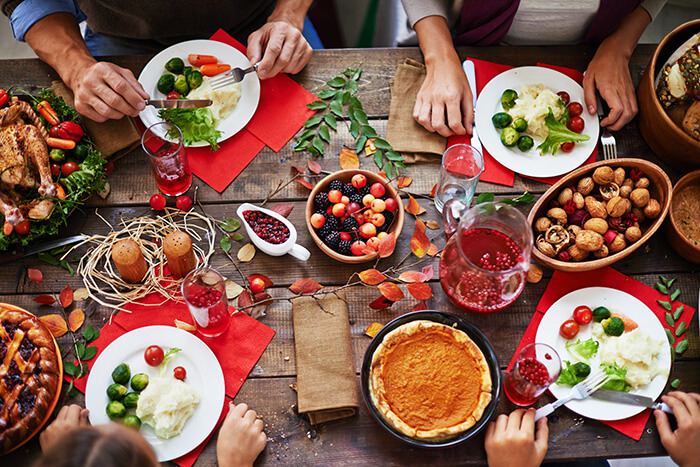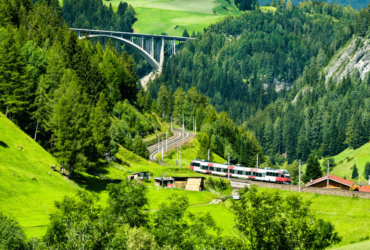Recently, I heard an interview on XM Radio that dealt with the importance of people having options and the power to make their own choices. The interviewer asked the guest for his “take” on the topic.
“It’s like Thanksgiving,” he began. “We anticipate the holiday for weeks in advance and we look forward to family and friends gathering and everyone bringing along a dish and contributing to the feast. We look forward to a totally happy experience.” But when we finally sit down at that table and see turkey and gravy and green beans and squash casserole and stuffing and cranberry sauce and baked potatoes and sweet potatoes and all the other yummy, delicious food, it’s simply overwhelming. And that doesn’t even factor in dessert. Am I going to have a slice of pumpkin pie, apple pie, mince pie – or one of each? It’s too much!
“But somehow we manage to take a little of this and a little of that so we don’t offend anybody by not trying their dish and the end-result is we begin to feel ‘blah’.
“But …” he said, pausing so you knew his real point was forthcoming. “Take the day after Thanksgiving. Think about it. It’s mid-day and your stomach’s growling and you open that refrigerator door. You look at all the shelves crammed full of leftovers and you’re like, ‘Hmmm, I think I’ll have this and this and this.’ You get to choose only what your stomach wants and what you know you’ll really like. The day after Thanksgiving, in some ways, is better than Thanksgiving itself because you have the chance to choose. That’s what I mean about having options and giving people the power of choice.”
This scenario is a perfect example of what can happen with corporate meetings and events. During the planning stages, it’s easy to get caught up in trying to predict what attendees want, and end up missing the mark altogether. The best event experiences occur when the audience is actively involved.
Six Ideas to Consider When Planning your Next Corporate Meeting or Event
- Let attendees drive the agenda. – Poll participants prior to the program and ask them to list topics they most want to hear about, and why. Then tailor all presentations, breakouts, workshops, activities, etc. to meet those needs. (It’s the difference between ordering off the menu and being told what will be served.) Explore meaningful team-building activities that facilitate adult learning and demonstrate specific business/human principles. Have attendees sign up, in advance, by topic and/or session so you can allocate time and meeting space accordingly.
- Get out of your normal corporate meeting & event mindset. – Eschew the familiar and, chances are, your program will have more impact. Approach each conference as a unique opportunity to create a useful, engaging, adult learning experience.
- Push out info in advance. – If your sales numbers are already in or policy changes have been made, push that information out to your audience in advance of the meeting. Don’t wait and hold anything that doesn’t have to wait for your program. This frees up your time to customize your agenda and build in more and more of what your attendees told you they wanted.
- Embrace and leverage mobile devices. – There will be at least one mobile device in the possession of every member of your audience. Take advantage of this! Put smart-technology to work. Commission program-specific apps and plan to push out “on-the-fly” messaging during your program. Encourage attendees to Tweet, Instagram, text and share to their delight during your program. Do real-time polling via audience-response apps that deliver on-the-spot feedback (but be prepared to receive negative, as well as positive, feedback). Note: Be sure to ask your audience to mute mobile devices during business sessions!
- Stay in AM General Sessions only as long as necessary. – It’s important to have a set time and place to get the ball rolling each day but use AM General Sessions like a movie trailer. Tease to what’s on tap for the day, quickly summarize highlights from the previous day, and deliver any key housekeeping comments. Then send them along their merry way for a full day of hand-selected adult learning and interaction. You may only need 20 minutes, a half-hour, maybe an hour for morning General Sessions. Whatever the length, be sure you’re engaging them fully for the duration of the session. Treat agenda time like currency. Spend it wisely and where it’s most needed. A variety of smaller, topic-specific, pick-and-choose sessions are highly popular with an increasingly younger audience that craves a more personal touch.
- Build in time for reflection and networking. – Jumping from one session to another to another is like that Thanksgiving feast I mentioned earlier — too much of a good thing at one time. It can be overwhelming. Build in longer transition times so people can reflect upon what they just heard, discuss with colleagues, and clarify points with presenters. This facilitates and deepens adult learning, fosters engagement with co-workers, and demonstrates your commitment to truly delivering an educational experience. Finally, give them ample time between sessions to return important emails, voicemails, texts, etc.
It’s all about choices. Their choices.
When given a chance to choose, people feel more engaged. And when they’re engaged, they devour content, embrace key messages and objectives, and ultimately put into practice what they’ve learned. Finally, as the Meeting Planner, you’ll be seen as someone who truly cares about delivering a memorable, valuable corporate meeting experience.
Conclusion
It’s all about choices – theirs, not yours. Tune into the needs of your attendees and give ‘em what they want and need when planning a corporate meeting or event.
Cheers,





